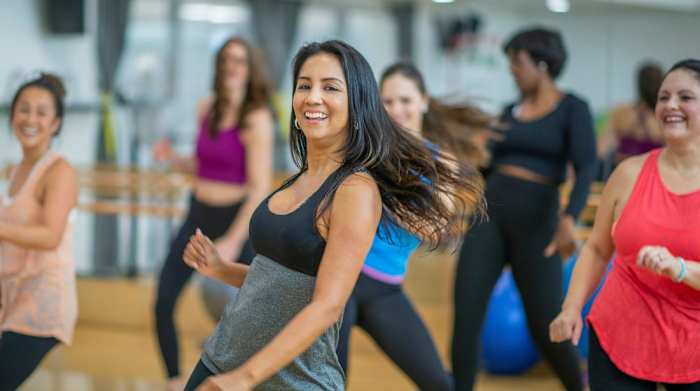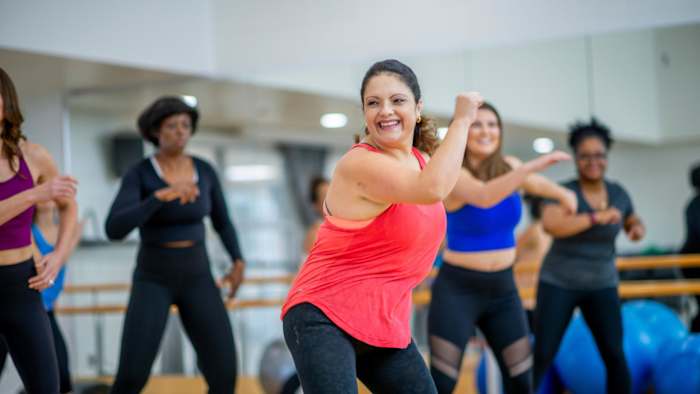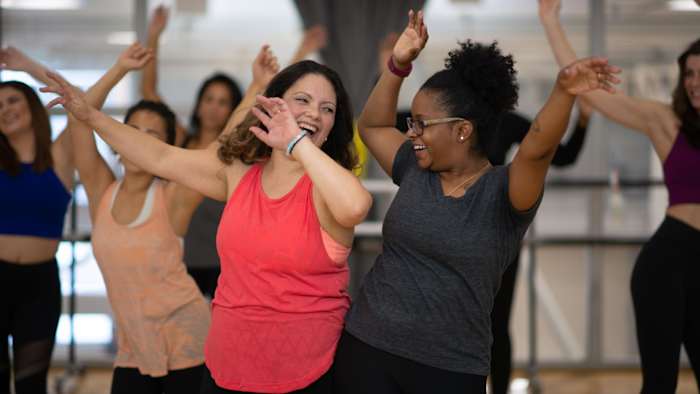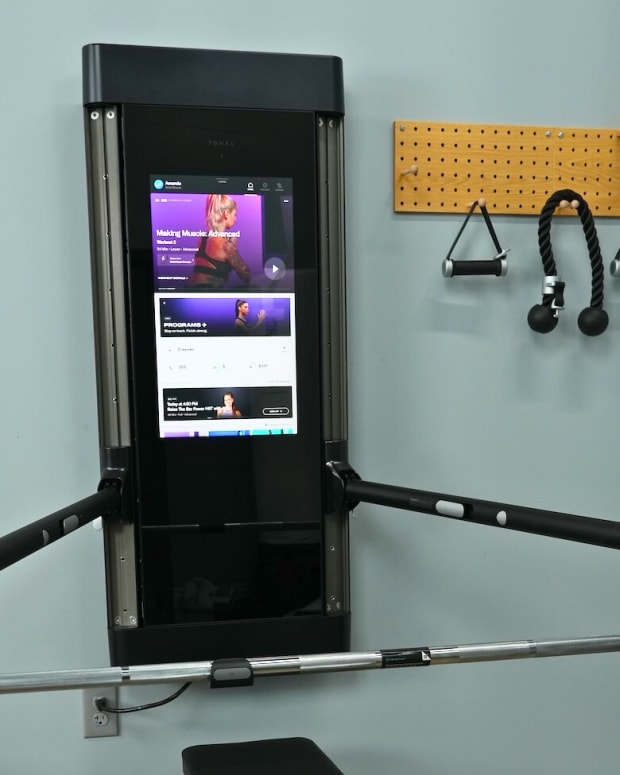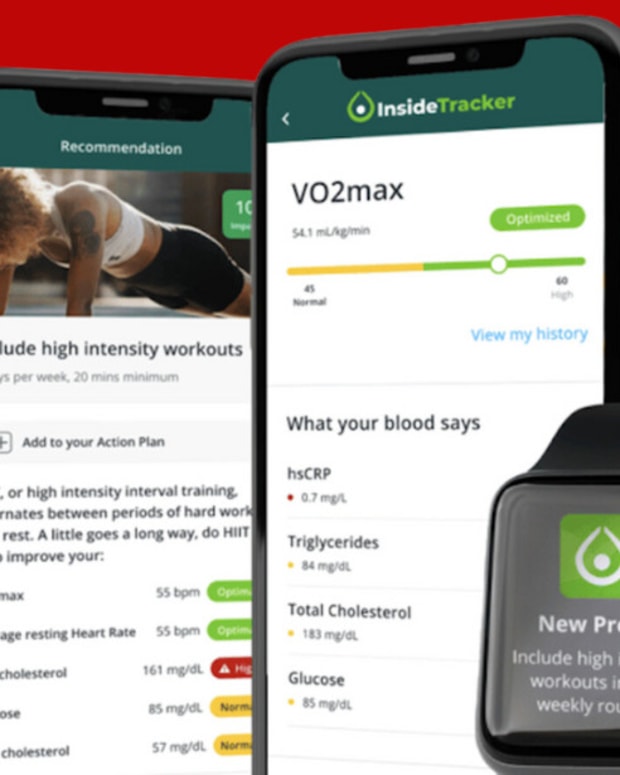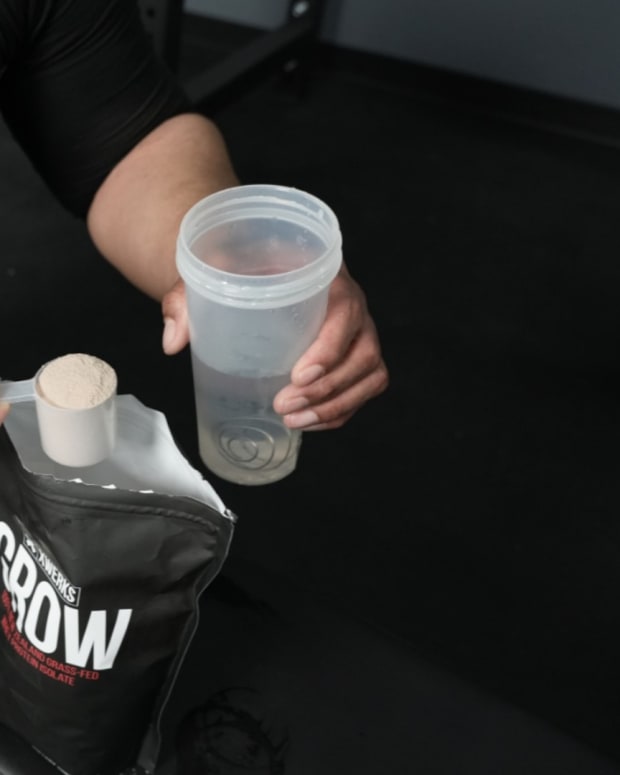The products featured in this article have been independently reviewed. When you buy something through the retail links on this page, we may earn commission at no cost to you, the reader. Sports Illustrated editorial staff are not involved in the creation of this content. Learn more here.
Zumba is a popular fitness program that blends cardio with Latin dance music. It burns calories, improves aerobic capacity (how hard you can exercise) and feels like a high-energy dance party. Chances are, if you belong to a gym that offers group classes, Zumba is on the list.
Whether you love Zumba and want to make teaching it a career, or you’re a certified personal trainer interested in offering group fitness classes, a Zumba certification may be the right investment for you. Becoming a licensed Zumba instructor can not only lend you credibility with clients and employers, but expand your teaching opportunities. Here’s everything you need to know about the certification.
Zumba Certification at a Glance
- Cost: $399
- Course Length: About 10 hours
- Pass Rate: No test required
- Best for: Dance enthusiasts and fitness trainers
What Is a Zumba Certification?
A Zumba certification is a type of personal training license that certifies you to teach Zumba classes. Zumba is a popular fitness program that combines aerobic moves with dance choreography—namely Latin music, but also pop, disco and hip-hop. Some classes also use Zumba Toning Sticks (one-pound Zumba branded hand weights) to incorporate strength training.
Zumba fitness instructors can teach classes virtually or in-person. Depending on where you live, you can find Zumba teaching opportunities at gyms, community centers and more. You can also complete your Zumba training online, on-demand or in-person.
Zumba Certification Pros
- Can be completed in just one day, or 10 hours
- In-person, virtual and on-demand sessions available
- Advanced training and skill development options
- Ability to specialize in teaching different age groups
Zumba Certification Cons
- Zumba Instructor Network (ZIN) membership with monthly fee required to avoid recertifying
- Some employers may require additional certification to teach Zumba
Types of Zumba Certifications
Zumba training can be completed in just one day, making it one of the quickest group exercise certifications on the market. In-person or livestream training will take around 10 hours and is taught by a Zumba Education Specialist. You can also opt for on-demand training, which is 10 hours of content broken up into 16 modules you can take at your own pace. You can choose from the core program, Zumba Jump Start Gold (for teaching Zumba to older adults) and Zumba Jump Start Kids & Kids Junior (for teaching kids).
The core program is known as Zumba Basic 1 Instructor Training and will teach you all Zumba fundamentals, including three types of cueing (or non-verbal signals you can use in class to signal to participants to complete moves) and four basic steps.
If you plan on teaching Zumba to older adults, you’ll want to enroll in Zumba Jump Start Gold, which, like Basic 1, costs $399 and can also be completed in just one day. The main difference is you’ll receive both a basic Zumba license and a Zumba Gold license, which certifies you to teach older adults. (Basic 1 training, for comparison, will only net you a standard Zumba license.)
There is also a training program that certifies you to teach kids ages 4 to 11: Jump Start Kids & Kids Junior. The price for this program is the same as Basic 1 ($399) and you’ll receive both a basic Zumba license and a Jump Start Kids & Kids Junior license.
How To Become a Zumba Instructor
Step 1: Take Zumba classes
Before enrolling in a Zumba certification program, it’s a smart idea to get familiar with the workout by taking Zumba classes. This will help you determine whether you enjoy Zumba classes enough to want to teach, and you’ll also get a feel for what type of music is played, the basic rhythms and how to follow instructor cues.
Taking Zumba classes can also be helpful for beginners who may not be as familiar with the program, but have a passion for dance, high-energy workouts and teaching. If you’re only familiar with one type of dancing, spending a few months taking Zumba classes can also expose you to merengue, reggaeton and other styles of music that often make up the diverse choreography of Zumba programs.
Step 2: Get your license
Once you’ve determined that pursuing a career in teaching Zumba is right for you, it’s time to get your license. Zumba offers three basic, one-day programs that let you walk away with your standard Zumba certification and/or a specialty license for teaching older or younger age groups. You also may want to consider enrolling in the ZIN, which will give you access to specialty education and keep your certification active.
Step 3: Purchase the right gear
You’ll want to have the right exercise gear on hand to teach Zumba effectively. Chances are, you may have most or all of these items in your closet already, especially if you’re a fitness enthusiast or a certified personal trainer. If not, be sure to invest in high-quality workout clothes such as leggings, tops and socks, plus good gym shoes.
Step 4: Apply for jobs
One major benefit of a Zumba certification is that you can find teaching opportunities just about anywhere, from gyms and community centers to pools (Aqua Zumba) and even some hotels. You can also choose to teach full-time or part-time, depending on your interests. Consider how and where you want to teach Zumba, and start applying for jobs that meet your needs. Remember: Some employers may require additional certification, such as CPR.
Step 5: Consider additional training
You’ve got your basic Zumba license, so what’s next? Zumba offers numerous specialty and skill development training courses to certify you in other types of Zumba programs, or to simply help you advance your knowledge. To access these trainings, you must be a member of ZIN which costs $43.94 per month.
How Much Does the Zumba Instructor Training Cost?
Basic Zumba instructor training costs $399 for a one-day or 10-hour program, which will net you a Zumba teaching license. You can also plan to pay an additional $43.94 per month for a ZIN membership, which allows you to keep your license active without re-certifying as long as you’re enrolled.
How to Maintain a Zumba Certification
Once you’re certified in whichever of the training courses you choose, your Zumba instructor license will be valid for six months. If you don’t want to re-certify each month, you can opt to pay a monthly fee for the ZIN, which will keep your license active.
Once you’ve completed one of the three basic training courses outlined above, you can also choose to enroll in optional specialty and skill development training sessions to advance your skills. These include Zumba Step, a high-intensity, lower-body workout that blends step aerobics with Zumba choreography, and Aqua Zumba, which certifies you to teach water-based Zumba workouts.
There are no prerequisites for a Zumba certification, but you need to be 18 years of age or older to enroll. And be sure to check with any potential places of employment for any requirements, as you may need additional certifications (such as CPR) to be hired. (Keep in mind that specialty Zumba training programs will require a basic Zumba instructor certification.)
Salary and Career Potential
How much you can earn from working as a certified Zumba instructor will depend on three factors: the price of the class, class size and how many classes you teach per week. The Zumba website gives a detailed breakdown of earning potentials, but here’s one example: If you work as a private instructor, a $10 class with 20 students taught five times per week can earn you around $4,000 per month, so it’s possible to make Zumba a full-time career. Keep in mind you may make an hourly rate if you work at a gym.
Who the Zumba Certification Is Best For
You don’t have to be a professional dancer or even a certified personal trainer to obtain a Zumba certification. Instead, there are a few basic qualities that can help you excel in this career path. First and foremost, a Zumba certification is best for people passionate about fitness (regardless of your career level) and motivating people to lead healthier lives.
While having a dance background is undoubtedly helpful, a general love for music and dance can be a great starting point, as your Zumba training course will cover the fundamentals, such as basic moves and how to give nonverbal movement cues. Becoming a licensed Zumba instructor is also an excellent option for people who like to teach, or for those looking for a fun and high-energy side hustle or part-time gig.
Traits of a Successful Zumba Instructor
In addition to the qualities above, Zumba instructors should possess certain traits to be successful in the field. A love for dancing and working with people is a must, but you should also have an ear for rhythm and sound. Zumba requires quite a bit of footwork, so you’ll also want to be quick on your feet, have good balance and be coordinated.
As a high-energy workout, a good Zumba instructor should be equally energetic and fun. Being upbeat, friendly and positive can go a long way, as can a bit of patience, as it isn’t always easy for class attendees to learn moves right off the bat. Be prepared to answer questions if needed, and to help your students learn at an appropriate pace.
Lastly, you’ll want to be somewhat savvy at marketing and social media. Your Zumba earnings will depend on how many people sign up for your class(es), as will your teaching opportunities, especially if you teach at a gym. Be prepared to promote yourself and your classes if you want to maximize your earning potential.
What Customers Say About Zumba Certification
Overall, customers are highly satisfied with the Zumba fitness program, giving the training regimen a 4.8/5-star rating on Trustpilot. “The instructor was so professional,” says one attendee who completed the Basic 1 training course. “I’ve never felt so prepared coming out of a training session,” another happy student notes.
A few Zumba certification students note issues with training modules that covered material too quickly (and didn’t give them adequate time to learn), as well as issues getting help from customer service, but the majority are satisfied with their Zumba certification training. It’s “totally worth it if you’re considering learning more about Zumba and gaining the confidence to teach,” a recent program participant says.
Zumba Certification FAQs
Here’s everything else there is to know about getting a Zumba certification.
What qualifications do Zumba instructors need?
Anyone 18 years or older can become a certified Zumba instructor, but personality and passion can go a long way in building a successful career teaching Zumba classes. High energy, a love for dancing and helping others lead a healthy lifestyle are all essential.
How do I start teaching Zumba?
You can start teaching Zumba by obtaining a basic Zumba fitness certification, but being familiar with the fitness program can help you learn the basics more quickly. If you plan to teach Zumba, it may be a good idea to attend Zumba classes in advance to get a feel for basic rhythms, dance moves and popular songs used in Zumba playlists.
The Takeaway: Is the Zumba Certification Right for You?
Whether you have a passion for dancing, teaching or both, a Zumba certification can lend you credibility with potential employers and give you opportunities to motivate others to lead healthier lives—all while having fun. If a Zumba career sounds right for you, investing time, energy and money into a Zumba certification may be worth it.
